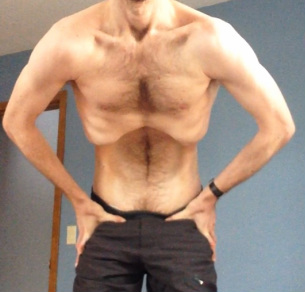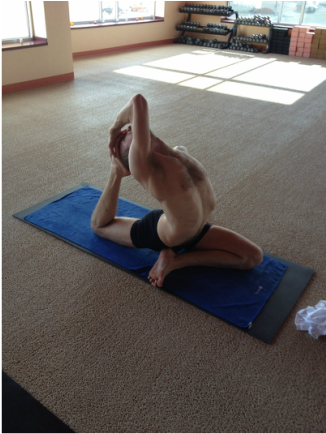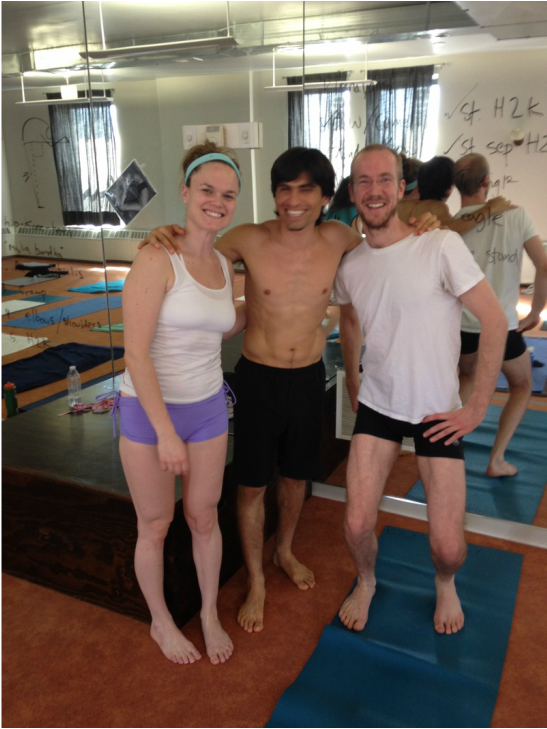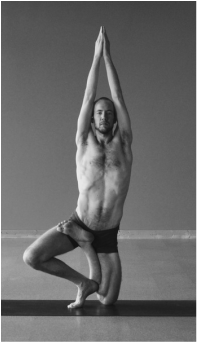|
The Vishnu Purana, one of the ancient spiritual texts of India, points out that each and every person will know when mankind has entered the Dark Age: 'When society reaches the stage that property confers rank, where wealth becomes the only source of virtue, where passion is the sole bond between man and woman, and where falsehood is the source of success.'
From 'The Spiritual Science of Kriya Yoga' by Goswami Kriyananda.
0 Comments
The fifth limb of Patanjali's yoga is Pratyahara, or Withdrawal Of the Senses. This is important on our path toward union because our senses are powerful forces, constantly drawing our attention outward. The goal of Withdrawal Of the Senses is to free the mind from the distraction of the world of our senses and the world of our bodies. The consciousness can then turn inward to the peace and stillness within, eventually leading to a greater cosmic understanding and union.
Once we begin to notice it, the outward draw of our senses is obvious and ever-present. We even create situations in which our senses are stimulated in order to avoid our inner selves. Sight - Television, movies and video games offer sight stimulation that draws our mind outward. I have heard that our mind is more active when staring at a wall than it is when watching television. Hearing - Background music is the big culprit here. Every store, restaurant and bank has music playing to stimulate our sense of hearing. And most people listen to the radio or music in the car or when studying. All of these instances of aural stimulation draw the mind outward and distract it. Conversation often acts as a distraction too. We talk and listen specifically to draw our mind outward and avoid silence. Touch - Fidgeting, twiddling of thumbs or fingers, scratching, face rubbing, beard scratching, self-hugging, chewing gum and clenching teeth are all examples of distracting our minds through the sense of touch. This also includes sex and eating. Taste - With our highly developed system for creating edible "foods" with powerful taste properties like processed sweet, salty and fatty snacks, taste is commonly used for drawing the mind outward. Especially whenever we eat because we are bored. That is a perfect example of using taste as a mental distraction. Smell - I actually don't know of any ways in which we use smell as distraction. I encourage your thoughts and feedback if you have any. FOOD & TELEVISION Eating is especially powerful distraction due to its multi-sensory nature. It stimulates our taste through its flavors. It also stimulates our sense of touch through texture. Food making companies invest lots of research into making their foods "feel" just right, with the right consistency or crunch. Food also stimulates our hearing. Our mouths are right next to our ears, so whenever we eat our hearing is deeply engaged, especially in crunchy foods. Television is also a multi-sensory distraction. Its quickly moving light projections draw our eyes/sight outward, and the sounds draw our hearing. A third element of television is its attraction to our 6th "sense," our mind. The stories and dramas of television, movies and sports engage our minds in a kind of distraction. We are enticed to consider the nature of the plots or get invested in the outcome of the big game. It all pulls our minds outward. The concept of withdrawing the senses suggests avoiding or ignoring these stimuli as much as possible. Without these stimuli, our minds become quieter and more sensitive. We can examine ourselves, our nature and the nature of the universe with far greater subtlety. Surprisingly (or not), my posture practice is leading me into more mind-body connection exercises like Pranayama (Breath and Energy Control), Bandhas (Muscle/Energy Locks) and specific muscle control.
The pictures above are of Uddiyana Bandha (Flying Lock). The breath is expelled completely and held out. Then the muscles pull in as if taking a breath, but without letting any air in. The result is the diaphragm muscle pulling up into the chest cavity and the abdominal cavity sucking inward toward the spine and upward. I have been practicing this for a few months now, and I have seen significant improvements in my muscle control and my abdominal strength. At first, it was very awkward and uncomfortable in the muscles and also in the intestines which are getting compressed in the belly. Over time, my muscle contraction has gotten more consistent and requires less effort. Also, my intestines respond better to the compression, leading me to believe they are functioning better and there is less stagnant material within. Practicing this bandha/lock and others has brought an increase in my general energy, improved focus and improved digestion. When practicing stretching postures including backbends, it is easy to make the pose just about the bend, the stretch. In backbends especially, it is easy to get caught up in how deeply my spine is bending. But there are other, more fundamental, elements of backbends that facilitate a deeper bend.
For example, in the One-Legged Pigeon backbend (pictured above right), it is easy to think that the posture is just getting your head onto your foot, which I suppose it is at some level. Backbending takes a lot of strength in the muscles of the back and shoulders. The back must be strong enough to pull the spine into a reverse bend, especially in the thoracic (middle) section. And the front must be open enough to allow the body to move in this direction. In preparation for the One-Legged Pigeon backbend, to strengthen the back muscles, I use only strength to pull my body upright and backward, not relying on the grip between the foot and the hand. I also stretch my arms up and back, relying on shoulder strength. This is very challenging, even moreso without interlacing the fingers. By combining these two actions - stretching up with the arms and pulling back with the back muscles (pictured above left) - I am working into the backbend using my own strength and not just the leverage of hand pulling foot. I build strength and awareness of the necessary muscles in this position, making the ultimate stretch a lot deeper and more satisfying when I release into it. Yesterday Ida and I went to Chicago to take a day-long posture clinic and class with Esak Garcia, the 2005 Bishnu Ghosh Asana World Champion and one of Bikram's senior teachers. We spent the first 5 hours breaking down a handful of the postures, taking them step by step, muscle by muscle, organ by organ. It was interesting to hear such an accomplished yogi talk about the different elements that make a complete posture. I was glad at many points to have the training and practice I have. I understood what Esak was saying from an anatomical and physiological standpoint and also from my own personal experience.
Esak's approach is similar to Mary Jarvis' and also to the Bikram community at large. Squeeze everything, engage everything all the time. This is different from Tony Sanchez's approach. More than once, Tony told us that he tries not to engage anything when doing the postures; that he uses energy instead of muscles. Sometimes I feel like the Bikram school is trying to defy the laws of physics instead of working with them: bend forward without shifting backward for a counterweight, stretch your backside muscles while also engaging them. I was very happy that Esak also focused on stillness, something I have never heard another Bikram teacher (other than Bikram in his books) mention. Esak said that "the posture is holding still for 10 seconds." Simple and clear. But then the dialogue in class is always push, push, push, farther, deeper. It's a bit confusing. After the posture clinic, we did the beginning class. Out of respect and curiosity, I tried the postures how Esak suggests, with complete engagement. It was powerful and very challenging, especially in the heat. Where normally I can practice postures for 5 hours without stopping, I had to rest after about 25-30 minutes, in the middle of the balancing series. It reminded me of my early days practicing Bikram's class: give 100% right from the start and burn out long before the class is done. All in all, it was a great day. It is always inspiring and enriching to discuss yoga and to be around more accomplished yogis than myself. I learned a lot and tried some new things. Thanks Esak! "A yogi engages himself in a definite, step-by-step procedure by which the body and mind are disciplined and the soul gradually liberated. Taking nothing for granted on emotional grounds or by faith, a yogi practices a thoroughly tested series of exercises that were first mapped out by the ancient rishis."
From 'Autobiography of a Yogi' by Paramahansa Yogananda. I have a tendency to do things to the extreme. When I get cookies from the store, I eat 5 of them instead of one. I once ran 5 miles after years without running just to prove to myself that I could. (I had trouble walking for about a week after.) My asana/posture practice is slightly less extreme but has those tendencies - bursts of energy, long days of practice followed by days of rest. I want to move in the direction of a sensible, consistent practice that I can do everyday. It will be healthier in the long run and it won't require me to find 4 or 5 hours at a time to practice.
Part of the difficulty is that there are so many postures and exercises. It can take 4-5 hours to practice all of the 100+ postures that I want to practice, and that doesn't include 2nd sets or in-depth posture work. Then there is about an hour of breathing/pranayama exercises that are separate from the postures. So a "complete" practice takes about 6 hours, preferably without eating for 3 hours before. It leaves me completely exhausted for about a day and a half, meaning that I can't do this everyday. It is important to practice every day. It is a significant part of the discipline, and one that is becoming more important to me. So I need to find a way to whittle the postures down into chunks of about 2 hours, an amount of time that I consider sustainable both physically and logistically. And the 2 hour chunks need to be complete practices, working my body and mind in a balanced way while also moving me forward. PRIMARY AND SECONDARY At this point, I have decided to split the postures into Primary and Secondary sequences. The Primary sequence will be a well-rounded practice, with beginning and intermediate postures from every Series (standing, fixed firm, lotus, double sided, stretching, etc). I will do this Primary sequence 3 times per week, every other day. It will maintain the foundation of my practice and be a stable reference to gauge my progress. For this sequence, I am going to use the Core 40/Master's Core System, a sequence of 40 postures. This sequence is a great all-around practice. On the opposite days, I will do Secondary sequences that I am developing. They will be about 2 hours in length, and they will focus on different areas for advancement and development. For example, on one of the Secondary days I will do the entire Lotus series, on another of the days I will do the entire Full backbending series, on another of the days I will do the Tortoise series. On the 7th day I will rest. With this system I hope to do 3 things: 1) Maintain a sustainable practice that I can do every day. Like I mentioned earlier, the daily discipline is increasingly important to me. 2) Have a complete practice. When I get too far away from the pre-developed systems, I tend to focus on what I want to focus on and end up leaving some things by the wayside. My breathing, twisting and some of my stretching get left behind. 3) Develop and progress. In the midst of maintaining a complete and sustainable practice, I want to continue progressing and improving. But I can't let it be at the expense of the bigger picture. As I have been reading Autobiography of a Yogi, I have been thinking a lot about union with the divine. Because that is the union that yoga (a word meaning "union") refers to - union with the divine. We call the "divine" by several names: enlightenment, bliss, ecstasy, samadhi. And we have polluted the meaning of yoga a bit when we treat it as exercise.
Yes, one of the first steps in the pursuit of divine union is the union between body and mind, and the asana/posture practice helps greatly with that. But why have we done away with the breath, energy and meditation practices? Perhaps it is simply because our western culture loves fitness, so these postures and exercises fill that role, the latest fitness trend. In Autobiography of a Yogi, Yogananda says that once we begin to pursue union with the divine, all worldly pursuits pale in comparison. Money becomes meaningless when we are pursuing God. Acceptance and admiration are only figments of our over-active human minds which quiet when we practice yoga. I do not claim to know the best path to union with the divine, or even what "the divine" means. But I know that when I get a small glimpse of it through the postures or breathing or meditation, that my being becomes still and joyful, and my usual insecurities and neuroses disappear, if only for a few moments. This, then, becomes my goal: to know better the peace and unity of the individual with the divine. "Conserve your powers. Be like the capacious ocean, absorbing quietly all the tributary rivers of the senses. Daily renewed sense yearnings sap your inner peace; they are like openings in a reservoir that permit vital waters to be wasted in the desert soil of materialism. The forceful, activating impulse of wrong desire is the greatest enemy to the happiness of man. Roam in the world as a lion of self-control; don't let the frogs of sense weakness kick you around!"
From Autobiography of a Yogi by Paramahansa Yogananda Some days there is no inspiration, no passionate will to move forward. Some days there is no motivation, no curiosity. Some days there is only bewilderment and frustration. On these days, when we are devoid of any feeling that might push us forward, we need only to practice. Breathe, quiet the mind, quiet the body. We know the motions, we know the process. We simply have to do it.
|
This journal honors my ongoing experience with the practice, study and teaching of yoga.
My FavoritesPopular Posts1) Sridaiva Yoga: Good Intention But Imbalanced
2) Understanding Chair Posture 2) Why I Don't Use Sanskrit or Say Namaste 3) The Meaningless Drudgery of Physical Yoga 5) Beyond Bikram: Why This Is a Great Time For Ghosh Yoga Categories
All
Archives
November 2017
|










 RSS Feed
RSS Feed